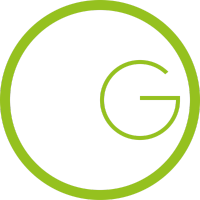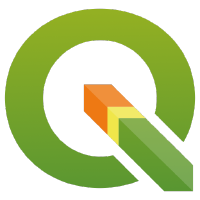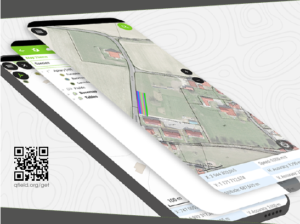New release for QField : 3.4 “Ebo”
Oslandia is the main partner of OPENGIS.ch around QField. We are proud today to forward the announcement of the new QField release 3.4 “Ebo”.
Main highlights

A new geofencing framework has landed, enabling users to configure QField behaviors in relation to geofenced areas and user positioning. Geofenced areas are defined at the project-level and shaped by polygons from a chosen vector layer. The three available geofencing behaviours in this new release are:
- Alert user when inside an area polygon;
- Alert user when outside all defined area polygons and
- Inform the user when entering and leaving an area polygons.
In addition to being alerted or informed, users can also prevent digitizing of features when being alerted by the first or second behaviour. The configuration of this functionality is done in QGIS using QFieldSync.

Pro tip: geofencing settings are embedded within projects, which means it is easy to deploy these constraints to a team of field workers through QFieldCloud. Thanks Terrex Seismic for sponsoring this functionality.
QField now offers users access to a brand new processing toolbox containing over a dozen algorithms for manipulating digitized geometries directly in the field. As with many parts of QField, this feature relies on QGIS’ core library, namely its processing framework and the numerous, well-maintained algorithms it comes with.
The algorithms exposed in QField unlock many useful functionalities for refining geometries, including orthogonalization, smoothing, buffering, rotation, affine transformation, etc. As users configure algorithms’ parameters, a grey preview of the output will be visible as an overlay on top of the map canvas.

To reach the processing toolbox in QField, select one or more features by long-pressing on them in the features list, open the 3-dot menu and click on the process selected feature(s) action. Are you excited about this one? Send your thanks to the National Land Survey of Finland, who’s support made this a reality.
QField’s camera has gained support for customized ratio and resolution of photos, as well as the ability to stamp details – date and time as well as location details – onto captured photos. In fact, QField’s own camera has received so much attention in the last few releases that it was decided to make it the default one. On supported platforms, users can switch to their OS camera by disabling the native camera option found at the bottom of the QField settings’ general tab.
Wait, there’s more
There are plenty more improvements packed into this release from project variables editing using a revamped variables editor through to integration of QField documentation help in the search bar and the ability to search cloud project lists. Read the full 3.4 changelog to know more, and enjoy the release!
Contact us !
A question concerning QField ? Interested in QField deployment ? Do not hesitate to contact Oslandia to discuss your project !











 For those unfamiliar with Oslandia,
For those unfamiliar with Oslandia,  Oslandia is a French company specializing in open-source Geographic Information Systems (GIS). Since our establishment in 2009, we have been providing consulting, development, and training services in GIS, with reknown expertise. Oslandia is a dedicated open-source player and the largest contributor to the QGIS solution in France.
Oslandia is a French company specializing in open-source Geographic Information Systems (GIS). Since our establishment in 2009, we have been providing consulting, development, and training services in GIS, with reknown expertise. Oslandia is a dedicated open-source player and the largest contributor to the QGIS solution in France.

 Some may still be unfamiliar with #QGIS ?
Some may still be unfamiliar with #QGIS ?
 Today, we are delighted to announce our strategic partnership aimed at strengthening and promoting QField, the mobile application companion of QGIS Desktop.
Today, we are delighted to announce our strategic partnership aimed at strengthening and promoting QField, the mobile application companion of QGIS Desktop. This partnership between Oslandia and OPENGIS.ch is a significant step for QField and open-source mobile GIS solutions. It will consolidate the platform, providing users worldwide with simplified access to effective tools for collecting, managing, and analyzing geospatial data in the field.
This partnership between Oslandia and OPENGIS.ch is a significant step for QField and open-source mobile GIS solutions. It will consolidate the platform, providing users worldwide with simplified access to effective tools for collecting, managing, and analyzing geospatial data in the field. QField, developed by OPENGIS.ch, is an advanced open-source mobile application that enables GIS professionals to work efficiently in the field, using interactive maps, collecting real-time data, and managing complex geospatial projects on Android, iOS, or Windows mobile devices.
QField, developed by OPENGIS.ch, is an advanced open-source mobile application that enables GIS professionals to work efficiently in the field, using interactive maps, collecting real-time data, and managing complex geospatial projects on Android, iOS, or Windows mobile devices.
 QField is cross-platform, based on the QGIS engine, facilitating seamless project sharing between desktop, mobile, and web applications.
QField is cross-platform, based on the QGIS engine, facilitating seamless project sharing between desktop, mobile, and web applications. QFieldCloud (
QFieldCloud (
 At Oslandia, we are thrilled to collaborate with OPENGIS.ch on QGIS technologies. Oslandia shares with OPENGIS.ch a common vision of open-source software development: a strong involvement in development communities, work in respect with the ecosystem, an highly skilled expertise, and a commitment to industrial-quality, robust, and sustainable software development.
At Oslandia, we are thrilled to collaborate with OPENGIS.ch on QGIS technologies. Oslandia shares with OPENGIS.ch a common vision of open-source software development: a strong involvement in development communities, work in respect with the ecosystem, an highly skilled expertise, and a commitment to industrial-quality, robust, and sustainable software development. With this partnership, we aim to offer our clients the highest expertise across all software components of the QGIS platform, from data capture to dissemination.
With this partnership, we aim to offer our clients the highest expertise across all software components of the QGIS platform, from data capture to dissemination. On the OpenGIS.ch side, Marco Bernasocchi adds:
On the OpenGIS.ch side, Marco Bernasocchi adds: Both companies are committed to continue supporting and improving QField and QFieldCloud as open-source projects, ensuring universal access to this high-quality mobile GIS solution without vendor dependencies.
Both companies are committed to continue supporting and improving QField and QFieldCloud as open-source projects, ensuring universal access to this high-quality mobile GIS solution without vendor dependencies. And now, are you ready for the field?
And now, are you ready for the field? If you need training, support, maintenance, deployment, or specific feature development on these platforms, don’t hesitate to contact us. You will have access to the best experts available:
If you need training, support, maintenance, deployment, or specific feature development on these platforms, don’t hesitate to contact us. You will have access to the best experts available: 